| Faculty | Contact |
FAQ | Home | Summer Program |
neuroscience, magnetic resonance, functional mri, fMRI, neurosurgery, brain mapping, cognitive neuroscience, eeg, positron emission tomography, ucla, neuroimaging, pulse sequences, alzheimer, parkinson, perception, neurophysiology, magnetic resonance imaging, functional magnetic resonance imaging, cognition, psychology, epilepsy, PET, optical intrinsic signal, OIS, QEEG, magnetoencephalography, MEG, spectroscopy, nih, nimh, spm, fsl, afni, macine learning, physics. electroencephalography, electrophysiology, imaging, rf coil, diffusion, tractography, connectome, big data
A few Current and Former UCLA Neuromaging Trainees
==> This page currently under development 1/24/11<==

|
Allison Clements Burggren, Ph.D.I was attracted to UCLA initially as a graduate student because of the diversity of research options I had available to me. Now as a post-doctoral fellow, I find more and more that UCLA is simply a wonderful to place to do research because of the supportive environment from both faculty and other trainees. My scientific interests are mainly in using functional and structural neuroimaging to facilitate an earlier diagnosis of Alzheimer's disease. I am particularly inerested in neural correlates of genetic differences in people at increased risk for Alzheimer's disease. |
|
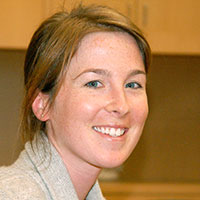 |
||
Lara Foland-Ross, Ph.D.UCLA is a perfect fit for students interested in pursuing a career in clinical neuroscience. The neuroimaging faculty range from psychologists and psychiatrists, to those specializing in engineering and animal based models of disease, creating an exciting and enriched research atmosphere. The training I receieved from my mentors and collaborators helped me to jump head first into designing and launching my own studies. My current research focus is centered on elucidating the interactions between stress, genes, endocrine function and neural structure in major depression. |
||
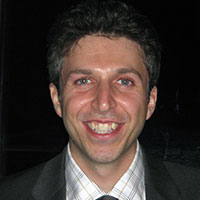 |
||
Ahmad Hariri, Ph.D.The training program in neuroimaging at UCLA played an instrumental role in shaping my research. The breadth and depth of the faculty and resources not only provided an invaluable foundation in the basic methodologies of neuroimaging but also a critical illustration of how these many and varied tools can be employed to better understand the neurobiological mechanisms supporting complex behaviors and contributing to emergence of clinical disorders |
||
 |
||
Anita Narasimhan, Ph.D.Being one of the country's foremost neurological research centers, the NeuroImaging center at UCLA has been a leader for several scientific approaches. As a doctoral student I have been very privileged to interact with the scientific community here who have a multi-disciplinary background and are a constant source of motivation to do research with excitement and creativity. My graduate research project involved removal of motion-corrupted signal, induced due to pathology in ocular movement, from MR images. |
||
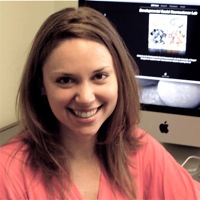 |
||
Jennifer Pfeifer, Ph.D.The opportunity to train in the UCLA neuroimaging program while completing my doctoral studies in psychology was critical to my development as an independent scientist. Diverse, well-respected faculty with expertise in neuroscience, psychology, and psychiatry were not only open to collaborating with me and each other, they actively encouraged interdisciplinary work. Such a forward-minded approach allowed me to combine my interests in socioemotional development and pediatric neuroimaging, and also exposed me to the importance of studying both typical and atypical populations. Now as an assistant professor in the psychology department at the University of Oregon, I continue to recognize the value and quality of my educational experiences at UCLA, and strive to cultivate a similar training environment here. |
||
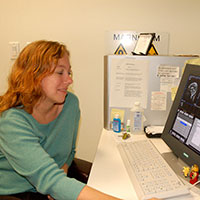 |
||
Kristi Clark, Ph.D.As a graduate student at UCLA, I have had the opportunity to work with some of the best scientists in the world. Students can build a strong graduate training program that includes: rigorous coursework, journal clubs, seminars, and talks given by invited speakers from around the world. Students also have access to high performance scanners and advanced computer systems for imaging analysis. |
||
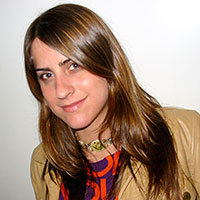 |
||
Jennifer Bramen, Ph.D.As a student at UCLA, I have had access to an excellent community of imaging researchers. I have built several collaborations with
highly respected scientists here, giving me multiple perspectives on science and functional imaging. Overall the faculty have treated
me more as a colleague than a student. Also, the extensive coursework in imaging, cognitive neuroscience and systems neuroscience are
of innumerable value. I am currently seeking a post doctoral position, and between the reputation of the UCLA imaging program, my
collaborators, and the way I have learned to think about both science and methodological issues, I am finding myself in a position to
chose from a wide range of possibilities. |
||
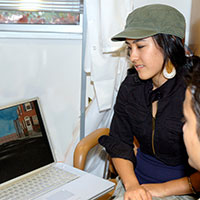 |
||
Nanthia Suthana, Ph.D.My primary research focus is on the neural basis of learning and memory through combination of single-unit recordings with high-resolution magnetic resonance imaging (MRI) in order to record from neurons within hippocampal subregions during learning and memory. I am also investigating modulation of memory in temporal-lobe epilepsy patients in which deep brain stimulation is currently underway I am continuously amazed at the diverse range of training opportunities in the Neuroimaging Program here at UCLA. Not only are students provided with a strong foundation in all aspects of brain imaging including understanding basic technology, data acquisition, multi level analysis, and experimental design, but also the collaborative and enthusiastic attitude of faculty provides an exciting environment where creative research interests can be developed and expressed. The NITP Provided a multimodal foundation of Neuroimaging as a tool for studying cognitive function. Resources were extremely useful in designing, implementing, analyzing, and interpreting research projects. Faculty were extremely open, helpful, and collaborative. Lastly, courses were fun as well! |
||
 |
||
Amy HubbardThe UCLA neuroimaging facility has an optimum mix of state-of-the-art technology, cutting-edge researchers, and cross-disciplinary projects. I am excited to be a part of Dr. Dapretto's lab, as she is doing work that expands our understanding of many facets of language organization in the brain and language-related disorders. |
||
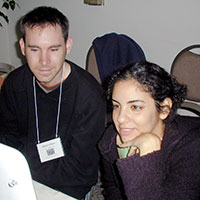 |
||
Stephen Wilson, Ph.D.UCLA is a great interdisciplinary environment where trainees can learn the wide range of skills which are necessary to become a successful researcher in cognitive neuroscience, from MR physics to fMRI experimental design and analysis.Lisa Aziz-Zadeh, Ph.D.UCLA is definitely a wonderful place to learn how to design, scan, and analyze your experiments. |
||
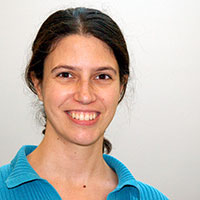 |
||
Meredith Braskie, Ph.D.I chose UCLA for two main reasons: a large number of terrific imaging faculty members, and a strong emphasis on students learning all aspects of imaging, including data collection. The breadth of quality faculty meant there would be a better chance of my finding a lab that was a good fit, and of forming collaborations that would facilitate interesting research. The focus on neuroimaging training meant that I would be better prepared for work after graduate school. Neuroimaging is a big part of the neuroscience program at UCLA; nota sideline, so there are classes offered that teach things like MRI physics, functional neuroanatomy, critical thinking related to imaging studies, and task design. In my time here, I learned that other factors important to imaging were also present: the MRI scanners are up-to-date and produce high-quality images, and they are research-dedicated which means that there is usually ample scan time at reasonable hours. |
||
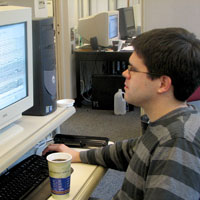 |
||
Peter Bachman, Ph.D.UCLA’s Psychology, Psychiatry and Neuroscience programs provide an enriching and supportive environment for interdisciplinary work, including my graduate and postdoctoral study of electrophysiological correlates of impaired information processing in schizophrenia patients. In particular, I worked with Ty Cannon as a graduate student, and received training in basic functional neuroimaging methodology. For my dissertation, I focused on electroencephalography (EEG), and was advised by both Ty and Cindy Yee-Bradbury. As a post-doc now, I’m working with Cindy, as well as Keith Nuechterlein in Psychiatry, to continue my training in EEG methodology and expand it to include autonomic nervous system activity. |
||
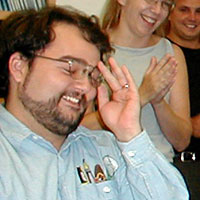 |
||
Richard Albistegui-DuBois, Ph.D.The neuroimaging program at UCLA is unmatched at providing a thorough grounding in all aspects of imaging design, applications, and analysis. The diverse faculty provide in expertise in all aspects of the field, from device engineering to pulse sequence programming to advanced analysis techniques to applications in many areas of neuroscience. Between the modern facilities (organized around maximizing investigators' ability to get their work done) and the collegial atmosphere, trainees in the UCLA neuroimaging program get what they need to do creative and productive science |
||
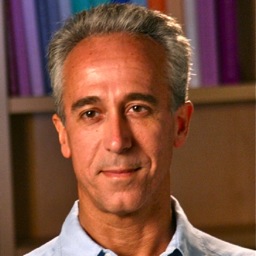 |
||
Marco Iacoboni, M.D., Ph.D.The neuroimaging training experience i received at UCLA in the mid-nineties was fantastic. There is a strong emphasis on methods and multi-modality in brain imaging, such that one learns easily how to integrate multiple brain imaging approaches. The campus is also highly interdisciplinary and collaborative and it is easy to establish collaborations with other labs. UCLA is a fabulously rich environment and its imaging training was a wonderful experience for me. |
||
|
|

|
|
The UCLA Neuroimaging Training Program is funded by generous awards from the National Institutes of Health, grant numbers R90 DA022768 and T90 DA023422
